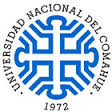- RDI Home
- →
- Facultad de Ciencias Marinas
- →
- Tesinas
- →
- View Item
JavaScript is disabled for your browser. Some features of this site may not work without it.
| dc.contributor.advisor | Storero, Lorena Pía | es_ES |
| dc.contributor.other | Maggioni, Matías | es_ES |
| dc.creator | Soraire, Astrid Carolina | |
| dc.date | 2023 | |
| dc.date.accessioned | 2023-12-28T16:15:37Z | |
| dc.date.available | 2023-12-28T16:15:37Z | |
| dc.identifier.uri | http://rdi.uncoma.edu.ar/handle/uncomaid/17659 | |
| dc.description.abstract | Comprender la selección y preferencia de hábitat por parte de especies vulnerables es esencial para proponer medidas y estrategias para su conservación y la de sus ambientes. El objetivo de esta tesina fue evaluar, en ambiente natural y en cautiverio, la preferencia del caballito de mar patagónico Hippocampus patagonicus por distintos tipos de sustratos biogénicos presentes en la bahía San Antonio. Para ello, se estimó la disponibilidad y selección de sustratos biogénicos en ambiente natural, se determinó la abundancia y diversidad de potenciales presas en cada sustrato, y se evaluó experimentalmente la selección de sustratos en acuario considerando la presencia o ausencia de presas. En ambiente natural H. patagonicus utilizó más frecuentemente (81%) el alga roja Ceramium rubrum y el alga parda Dictyota dichotoma, que son los sustratos disponibles en mayor proporción en la bahía San Antonio. La mayor riqueza promedio de especies presa se observó en la esponja Hymeniacidon perlevis (31,25) y en la ascidia Styela clava (29,50). Las algas verdes Ulva spp y el alga parda Undaria pinnatifida tuvieron menor número promedio de presas (13,25 y 13,50, respectivamente), pero la diversidad fue similar a las otras algas. | es_ES |
| dc.description.abstract | Understanding the habitat selection and preference of vulnerable species is essential to propose measures and strategies for the conservation of the species and its environments. The objective was to evaluate the preference of the Patagonian seahorse Hippocampus patagonicus for different types of biogenic substrates found in San Antonio Bay, both in the natural environment and in captivity. The availability and selection of biogenic substrates were assessed in the natural environment, the abundance and diversity of potential prey on each substrate were determined, and substrate selection was experimentally evaluated in an aquarium considering the presence of prey. In the natural environment, H. patagonicus used more frequently the red algae, Ceramium rubrum and the brown algae Dictyota dichotoma (81%), which are the most abundant substrates in San Antonio Bay. The highest richness of prey species was observed in the sponge Hymeniacidon perlevis (31.25%) and the ascidian Styela clava (29.50%). Green algae Ulva spp. and the brown alga U. pinnatifida had fewer prey (13.25% and 13.5%, respectively), but their diversity was similar to other algae. In aquarium, substrate selection was independent of prey presence. The most chosen substrate was the ascidian S. clava (53%), followed by U. pinnatifida (15.63%). In experiments using artificial substrates (mimics), the most chosen substrate was the ascidian S. clava (56.25%), followed by the red alga C. rubrum (12.50%), and the brown algae U. pinnatifida (12.50%). In the coastal environments of San Antonio Bay, H. patagonicus uses the most abundant algae in its habitat as a substrate for attachment, while resting or camouflaging. However, in aquarium, this seahorse shows preference for the ascidian S. clava, which seems to be related to the substrate´s structure rather than the availability of potential prey. In the context of increased modification of coastal environments due to anthropogenic activities, Inderstanding the habitat preferences of vulnerable species, such as the Patagonian seahorse, is crucial for contributing to the conservation and protection of both, the species and the environments of San Antonio Bay where it thrives. | es_ES |
| dc.format | application/pdf | es_ES |
| dc.language | spa | es_ES |
| dc.publisher | Escuela Superior de Ciencias Marinas | es_ES |
| dc.rights | Atribución-NoComercial-CompartirIgual 2.5 Argentina | es_ES |
| dc.rights.uri | https://creativecommons.org/licenses/by-nc-sa/2.5/ar/ | es_ES |
| dc.subject | Hippocampus patagonicus | es_ES |
| dc.subject | Selección de sustratos | es_ES |
| dc.subject | Especies introducidas | es_ES |
| dc.subject | Caballitos de mar | es_ES |
| dc.subject | Ulva | es_ES |
| dc.subject | Substrate selection | es_ES |
| dc.subject | Substrate preference | es_ES |
| dc.subject | Introduced species | es_ES |
| dc.subject | https://purl.org/becyt/ford/1.5 | es_ES |
| dc.subject.other | Ciencias Puras | es_ES |
| dc.title | Preferencia del caballito de mar Hippocampus patagonicus por diferentes tipos de sustratos presentes en la bahía San Antonio, Rio Negro. | es_ES |
| dc.type | TesisdeGrado | es |
| dc.type | bachelorThesis | eu |
| dc.type | acceptedVersion | eu |
| unco.tesis.grado | Licenciada en Biología Marina | es_ES |
| dc.description.fil | Fil: Soraire Astrid Carolina. Universidad Nacional del Comahue. Escuela Superior de Ciencias Marinas; Argentina. | es_ES |
| dc.cole | Tesinas | es_ES |



